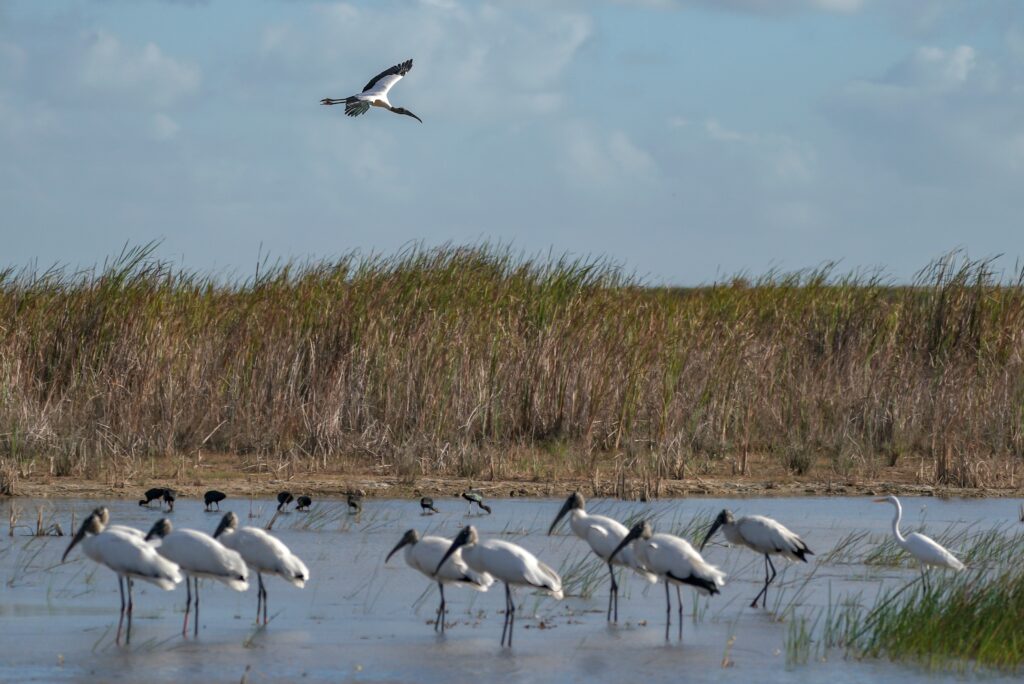Damien Schiff is a senior attorney at the Pacific Legal Foundation and argued Sackett v. Environmental Protection Agency at the Supreme Court in 2012 and 2023.
When the Supreme Court ruled in Sackett v. Environmental Protection Agency in 2023, which I argued on behalf of Michael and Chantell Sackett, it finally brought clarity and common sense to a part of environmental law that had long baffled courts, agencies and landowners. The Clean Water Act, the court held, regulates “waters of the United States,” or real bodies of water that any ordinary person would recognize as such.
On Monday, the Trump administration proposed a new “Waters of the United States” rule — a welcome effort to restore the law’s focus on real, continuous surface-water connections.
Though the law’s jurisdiction can reach wetlands, Sackett instructs that wetlands are regulated only when they are so physically inseparable from a lake, river or stream that you can’t tell where the water ends and the land begins. Put simply, under the Clean Water Act, the court found a “water” should be obviously water, and if a wetland is to be federally regulated, it must have a continuous surface-water connection to one of those relatively permanent bodies of water.
The 2023 ruling was a long-overdue course correction, but it did not go far enough. For decades, federal agencies had stretched the statute beyond recognition, sweeping in vast areas of private land that bore little resemblance to anything Congress authorized them to regulate. Sackett appeared to bring that era of boundless bureaucratic discretion to a close.
The Trump administration’s new proposal makes genuine progress but risks reintroducing the uncertainty Sackett sought to eliminate.
Under the proposed rule, wetlands would be regulated if they met a two-part test: They must contain surface water during the “wet season,” and they must touch a waterbody that flows during that season. On paper, that might sound consistent with Sackett’s requirement of a continuous surface connection. But Sackett gave only two exceptions to its continuous surface connection requirement: drought and low tides. These exceptions suggest unusual and short interruptions to the normal presence of water. In contrast, the “wet season” concept introduced by the proposed rule implies that surface water might be absent, regularly, for months at a time, and yet the agencies could still regulate it.
If the administration instead tied jurisdiction to truly continuous surface-water connections, regardless of “wet season,” it could align the rule fully with Sackett and give landowners the clarity Congress intended.
Getting the Sackett rule right is not just a question of legal quibbling. Landowners continue to suffer from agencies’ misinterpretation of the decision.
As an example, Rebecca and Caleb Linck, whom I also represent in litigation, own a 4.7-acre parcel in Bonner County, Idaho — the same county where the Sacketts fought their long battle. The Lincks’ land sits about a mile from the nearest perennial stream and two miles from a lake. When they hired a wetlands consultant to ensure they were complying with the Clean Water Act, they assumed they were in the clear.
Yet the Army Corps of Engineers asserted authority anyway, claiming that 1.13 acres of the Lincks’ property were federally regulated wetlands. The Army Corps relied on what it calls a “wetland complex” — a theory that allows regulators to stitch together disconnected parcels of land to create jurisdiction where none exists. In the Lincks’ case, the areas the engineers labeled “wetlands” were separated from the nearest alleged wetland by a 35-foot-wide gravel road with no culverts. But by combining both areas into one imaginary system, the Army Corps then claimed the distant wet area touched a small stream, which eventually fed into a navigable waterway.
This approach is nearly identical to the one used against the Sacketts years earlier, and the Supreme Court rejected it. But bureaucracies resist change. Even as the proposed rule formally recognizes the need for continuous surface water (at least during the “wet season”), agency culture can still undermine the rule’s intended reforming effect.
The Lincks’ case shows how that culture of resistance can nullify even the best-intentioned reforms. Until the Sackett decision is followed in both letter and spirit, landowners will remain trapped in regulatory limbo. The Trump administration’s proposal is a welcome step, and it could bring relief to many landowners now mired in enforcement actions. But the proposal stops short of what the Supreme Court clearly instructed: that wetlands may be regulated only when they are truly indistinguishable from a waterbody itself, regardless of season.
When agencies presume authority beyond what Congress designated, and beyond what the Supreme Court has permitted, they put every landowner at risk. And the Lincks, like the Sacketts before them, should not need a lawyer simply to enjoy their land.
The administration deserves credit for trying to bring the law into line with the Supreme Court’s direction. But it must finish the job and federal agencies must follow the law. “Continuous” means “continuous,” “indistinguishable” means “indistinguishable,” and regulatory inventions such as the “wet season” have no place in defining federal power. Following the Supreme Court’s clear rules would give families such as the Lincks real certainty over their land.
The post Even Trump’s EPA can’t get it quite right on this silly wetlands law
appeared first on Washington Post.




